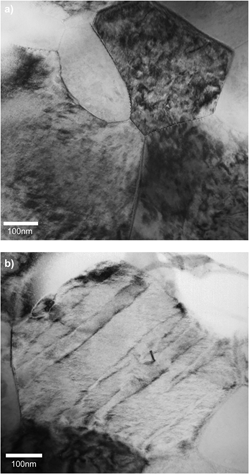Crossref Citations
This article has been cited by the following publications. This list is generated based on data provided by
Crossref.
Qin, Hongbin
Zhang, Hailong
Zhang, Bo‐Ping
Xu, Lihua
and
Gouma, P.
2011.
Hydrothermal Synthesis of Perovskite BiFeO3–BaTiO3 Crystallites.
Journal of the American Ceramic Society,
Vol. 94,
Issue. 11,
p.
3671.
Bharadwaja, S. S. N.
Trolier-McKinstry, S.
Cross, L. E.
and
Randall, C. A.
2012.
Reentrant dipole glass properties in (1 − x)BaTiO3 − xBiScO3, 0.1 ≤ x ≤ 0.4.
Applied Physics Letters,
Vol. 100,
Issue. 2,
Vorobiev, A.
Gevorgian, S.
Martirosyan, N.
Löffler, M.
and
Olsson, E.
2012.
Intrinsically tunable 0.67BiFeO3-0.33BaTiO3 thin film bulk acoustic wave resonators.
Applied Physics Letters,
Vol. 101,
Issue. 23,
Choi, Jin-Hong
Kim, Hyun-Ah
Han, Seung-Ho
Kang, Hyung-Won
Lee, Hyeung-Gyu
Kim, Jeong-Seog
and
Cheon, Chae-Il
2012.
BiFeO3-based Lead-free Piezoelectric Ceramics.
Journal of the Korean Institute of Electrical and Electronic Material Engineers,
Vol. 25,
Issue. 9,
p.
692.
Yao, Zhonghua
Liu, Ying
Song, Zhe
Wang, Zhijian
Hao, Hua
Cao, Minghe
Yu, Zhiyong
and
Liu, Hanxing
2012.
Structure and electrical properties of ternary BiFeO3-BaTiO3-PbTiO3 high-temperature piezoceramics.
Journal of Advanced Ceramics,
Vol. 1,
Issue. 3,
p.
227.
Zhou, Changrong
Yang, Huabin
Zhou, Qin
Cen, Zhenyong
Li, Weizhou
Yuan, Changlai
and
Wang, Hua
2013.
Dielectric, ferroelectric and piezoelectric properties of La-substituted BiFeO3–BaTiO3 ceramics.
Ceramics International,
Vol. 39,
Issue. 4,
p.
4307.
Cen, Zhenyong
Zhou, Changrong
Yang, Huabin
Zhou, Qin
Li, Weizhou
and
Yuan, Changlai
2013.
Structural, ferroelectric and piezoelectric properties of Mn-modified BiFeO3–BaTiO3 high-temperature ceramics.
Journal of Materials Science: Materials in Electronics,
Vol. 24,
Issue. 10,
p.
3952.
Yang, Huabin
Zhou, Changrong
Liu, Xinyu
Zhou, Qin
Chen, Guohua
Li, Weizhou
and
Wang, Hua
2013.
Piezoelectric properties and temperature stabilities of Mn- and Cu-modified BiFeO3–BaTiO3 high temperature ceramics.
Journal of the European Ceramic Society,
Vol. 33,
Issue. 6,
p.
1177.
Wang, Zhi
Xu, Wenfei
Peng, Hui
and
Tang, Xiaodong
2013.
Polyanion modulated evolution of perovskite BiFeO3 microspheres to microcubes by a microwave assisted hydrothermal method.
Journal of Materials Research,
Vol. 28,
Issue. 11,
p.
1498.
Zhou, Changrong
Yang, Huabin
Zhou, Qin
Chen, Guohua
Li, Weizhou
and
Wang, Hua
2013.
Effects of Bi excess on the structure and electrical properties of high-temperature BiFeO3–BaTiO3 piezoelectric ceramics.
Journal of Materials Science: Materials in Electronics,
Vol. 24,
Issue. 5,
p.
1685.
Chen, Jianguo
and
Cheng, Jinrong
2014.
Enhanced thermal stability of lead-free high temperature 0.75BiFeO3–0.25BaTiO3 ceramics with excess Bi content.
Journal of Alloys and Compounds,
Vol. 589,
Issue. ,
p.
115.
Zhang, Hailong
Jo, Wook
Wang, Ke
and
Webber, Kyle G.
2014.
Compositional dependence of dielectric and ferroelectric properties in BiFeO3–BaTiO3 solid solutions.
Ceramics International,
Vol. 40,
Issue. 3,
p.
4759.
Rojac, Tadej
Bencan, Andreja
Malic, Barbara
Tutuncu, Goknur
Jones, Jacob L.
Daniels, John E.
Damjanovic, Dragan
and
Green, D. J.
2014.
BiFeO3 Ceramics: Processing, Electrical, and Electromechanical Properties.
Journal of the American Ceramic Society,
Vol. 97,
Issue. 7,
p.
1993.
Zhou, Qin
Zhou, Changrong
Yang, Huabin
Yuan, Changlai
Chen, Guohua
Cao, Lei
and
Fan, Qiaolan
2014.
Piezoelectric and ferroelectric properties of Ga modified BiFeO3–BaTiO3 lead-free ceramics with high Curie temperature.
Journal of Materials Science: Materials in Electronics,
Vol. 25,
Issue. 1,
p.
196.
Lin, Yang
Zhang, Linlin
and
Yu, Jian
2015.
Stable piezoelectric property of modified BiFeO3–BaTiO3 lead-free piezoceramics.
Journal of Materials Science: Materials in Electronics,
Vol. 26,
Issue. 11,
p.
8432.
Bennett, James
Shrout, Thomas
Zhang, Shujun
Owston, Heather
Stevenson, Tim
Esat, Faye
Bell, Andrew
and
Comyn, T.
2015.
Variation of Piezoelectric properties and mechanisms across the relaxor-like/Ferroelectric continuum in BiFeO<sub>3</sub>– (K0.5Bi0.5)TiO3–PbTiO3 ceramics.
IEEE Transactions on Ultrasonics, Ferroelectrics, and Frequency Control,
Vol. 62,
Issue. 1,
p.
33.
Hou, Y. F.
Li, W. L.
Zhang, T. D.
Wang, W.
Cao, W. P.
Liu, X. L.
and
Fei, W. D.
2015.
Large piezoelectric response of BiFeO3/BaTiO3 polycrystalline films induced by the low-symmetry phase.
Physical Chemistry Chemical Physics,
Vol. 17,
Issue. 17,
p.
11593.
Fisher, John G.
Kim, Min-Gu
Kim, Daeung
Cha, Su-Jeong
Vu, Hung Van
Nguyen, Dieu
Kim, Young-Hun
Moon, Su-Hyun
Lee, Jong-Sook
Hussain, Ali
and
Kim, Myong-Ho
2015.
Reactive sintering of (K0.5Bi0.5)TiO3-BiFeO3 lead-free piezoelectric ceramics.
Journal of the Korean Physical Society,
Vol. 66,
Issue. 9,
p.
1426.
Park, J. S.
Lee, M. H.
Kim, D. J.
Kim, M-H.
Song, T. K.
Kim, S. W.
Kim, W-J.
and
Kumar, S.
2015.
Enhanced piezoelectric properties of BaZrO3-substituted 0.67BiFeO3-0.33BaTiO3 lead-free ceramics.
Journal of the Korean Physical Society,
Vol. 66,
Issue. 7,
p.
1106.
Rojac, Tadej
Ursic, Hana
Bencan, Andreja
Malic, Barbara
and
Damjanovic, Dragan
2015.
Mobile Domain Walls as a Bridge between Nanoscale Conductivity and Macroscopic Electromechanical Response.
Advanced Functional Materials,
Vol. 25,
Issue. 14,
p.
2099.





